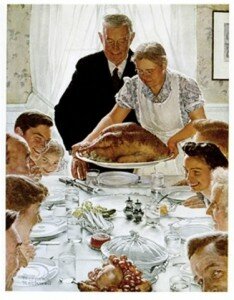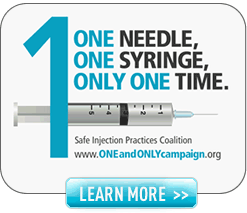Thanksgiving time is family time. We delight in family gatherings with lots of good food and great conversations. We at HONOReform wish you a wonderful Thanksgiving!
Sometimes life’s events mar even Thanksgiving, usually one of the happiest family times of the year. And when those life events are completely preventable, the disappointment is even greater.
Vicky is the daughter-in-law of one of the victims of the Nebraska Hepatitis C Outbreak of 2002. She explained the unrest that the outbreak caused in her family that Thanksgiving. Here is their story in Vicky’s words:
“Shortly after we learned that Dad tested positive for Hepatitis C, Mom called to say that they would not be coming to Thanksgiving at our house. I was shocked. Although Dad was fighting cancer, he was fairly active for an 80+ year old; he got out of the house regularly for errands and coffee with his friends. And above all, Mom and Dad loved spending time with the family, and the precious grandchildren were to be at the dinner.
When I pressed Mom for a reason, she was evasive, but finally she gave their reason: they didn’t want to risk transmitting the virus to any of the family. They were worried that by taking food off the same platters, perhaps an accidental reuse of forks or spoons would transmit the virus. Maybe even by being in the same room, the virus would be transmitted.”
Their concern was not uncommon among the community that autumn. The Nebraska Hepatitis C outbreak of 2002 was uncovered shortly before Thanksgiving. Public health officials determined that nurses at the Fremont Cancer Clinic reused syringes to access a large saline bag that was used for port flushes on many patients throughout the day. Because a patient with known Hepatitis C was treated at the clinic, the saline bag was contaminated with his blood, and therefore with Hepatitis C. Nebraska Health and Human Services notified the exposed patients, urging them to be tested for Hepatitis C, Hepatitis B and HIV. Of all the people who were tested, 99 were diagnosed with Hepatitis C, composing the largest outbreak of Hepatitis C from a single source in US history.
Because so many people in the community was affected by the outbreak, and because fear and ignorance about the disease was so rampant, it is likely that the conversation between Vicky and her in-laws was repeated in many households that Thanksgiving. Of course, viral hepatitis can ONLY be spread through blood-to-blood transmission, such as through unsafe injections. But at that time the community needed much education about this fact; the need for education about viral hepatitis continues to this day throughout the country.
Vicky went on to share:
“When I strongly assured Mom that the virus was not transmitted through the air or through saliva and that it could only be transmitted through blood, she was still reluctant. She said that even though that may be true, they didn’t want anyone to be uncomfortable by their presence. She thought it would be a jollier time for everyone else if they stayed home.
I told her no, it would not be a jolly time without you; all the family would all miss you too much. Iasked her to call her family physician and talk to him about the situation. After more argument, she finally agreed and said she would call back.
She did call back a week later and said that her family physician assured them it was safe for Dad to attend the family gathering and that they would be coming to Thanksgiving. But she was still worried for the others – worried that they would be uncomfortable with their presence. I offered to call each adult family member and assure them that they would not be at risk for contracting Hepatitis C from Dad at Thanksgiving dinner. She was very relieved by this and thanked me profusely.
We had a wonderful Thanksgiving gathering that year, perhaps made even more dear by our heightened concern and love for our dear Dad. We sat at the table a long time, reminiscing and telling family stories. It was a wonderful day, and my only regret was Mom and Dad’s worry, that nearly kept them from sharing that warm, loving family time with us.”
Vicky’s family had a lovely Thanksgiving that year, but not everyone who contracts disease through unsafe injections is so fortunate. Some will be too sick from their illness, others will let fear and worry keep them away from holiday gatherings. And all because of an illness which is completely preventable!
At your family gathering this year, do yourself and everyone else a favor. Share with your loved ones this advice from the One and Only Campaign:
In order to ensure that you are receiving safe injections, ask your healthcare providers the following questions before you receive an injection:
1. Will there be a new needle, new syringe, and a new vial for this procedure or injection?
2. Can you tell me how you prevent the spread of infections in your facility?
3. What steps are you taking to keep me safe?




